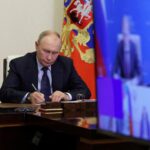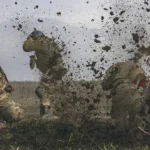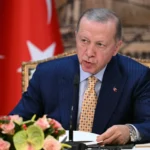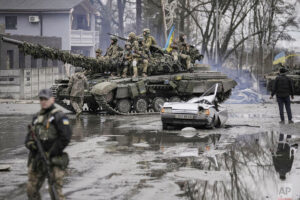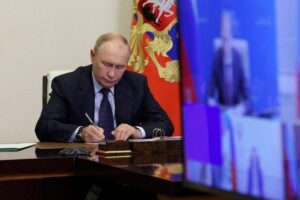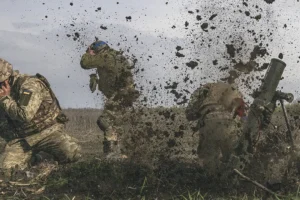Katsuji Nakazawa is a Tokyo-based senior staff and editorial writer at Nikkei. He spent seven years in China as a correspondent and later as China bureau chief. He was the 2014 recipient of the Vaughn-Ueda International Journalist prize.
After shifting away from a strict zero-COVID policy in November, China has seen a spike in COVID-19 cases. The spread has been faster than anticipated, almost bringing medical care and other crucial functions to a standstill.
Hospitals are overwhelmed. Elderly patients with fevers of nearly 40 C, or 104 F, have the choice of waiting six hours outside the hospitals or going home. Many choose the latter.
“One out of every two employees has now been infected and cannot come to work,” a representative at a Japanese-owned company with operations in Beijing and Shanghai said.
The Chinese government has not released detailed numbers of the infections. But judging from the information on the ground, the infection rate could be over 50% in the greater Beijing area. It is hard to find a family of three or four that is COVID-free. Some say that the rate exceeds 70% in the worst hit areas.
A man in his 50s living in the northeastern city of Shenyang said he and his family are now struggling with serious cases of COVID and all have had fevers of 39 C for several days. Yet, nearby pharmacies have run out of fever reducers, due to panic buying. They have also had no luck seeing doctors at overwhelmed medical institutions.
In the background, a line has formed as people wait to be admitted to a Beijing hospital on Dec. 13.
In the southern province of Guangdong, entire neighborhoods have fallen silent, with shops and restaurants unable to find the staff to run them, leaving no option but to close.
How did this happen? A Chinese source familiar with the situation gave an interesting analogy.
In warfare, when an army retreats, a rear-guard unit is left behind to hold off the chasing enemy. “China has now abandoned the zero-COVID policy without taking any such protective measures,” the source said. “All at once, everyone began to flee, with no orderly plan.”
The abandonment of the zero-COVID policy came after the “white-paper” protests across various cities. Yet, some say that COVID cases, especially asymptomatic ones, had already started to spread even before the protests.

Infectious disease expert Zhong Nanshan, long a supporter of the zero-COVID policy and who received from President Xi Jinping the Medal of the Republic, the highest state honor, for his contribution to fighting the pandemic, now says omicron “is no different from influenza” and “can be called the novel coronavirus cold.”
Zhong’s remarks have resulted in many people letting down their guard. His lack of consistency should have come as a surprise to many.

Another big issue is the chain of command over China’s COVID policy.
Confusing orders were delivered to local governments across the country, leaving bureaucrats panic-stricken, not knowing who to listen to and what to do. Some regions have not yet thoroughly eased restrictions as ordered by the central government.
One businessman this month traveled from a rural area to a big city by airplane after hearing about the easing.
But when he arrived at his destination airport, he was told he would not be allowed to enter the city, although he neither had COVID nor had been in contact with a patient. He was sent to quarantine at a deserted tourist spot up a mountain, hundreds of kilometers away.
Sources with knowledge of the inner workings of the Zhongnanhai, the Chinese leadership compound in central Beijing, have started to analyze the reason of the chaos, albeit in hushed voices.
One pointed to the negative effects of “two command centers” that exist within the Chinese leadership.
Another said that the Chinese Communist Party’s Central Economic Work Conference, which was held on Dec. 15-16 to brainstorm on how to manage the economy next year, “should have devoted most of its discussions to various anti-coronavirus measures.”
A quiet anger can be detected in their voices. It is anger toward the careless way the situation has been handled.
A typical example is the read out of the Central Economic Work Conference. It merely notes the need for “better coordinating epidemic prevention and control with economic and social development,” and urges efforts to optimize epidemic response, with a focus on the elderly and those with underlying diseases.
It is almost admitting that nothing was decided on COVID.
The absence of coherent policy hints at the fact that the zero-COVID policy was abandoned quickly at Xi’s orders. The words of the leader, who acquired ultimate power at the party’s 20th national congress in October, has changed everything. But it is also sowing confusion.
Li Qiang and Sun Chunlan. Sun will retire as vice premier in the spring.
Every five to 10 years, after China’s major leadership shuffles, tumultuous incidents can crop up in political voids. It looks like that has happened again.
Premier Li Keqiang and Vice Premier Sun Chunlan, the latter responsible for the government’s COVID response, are no longer part of the Communist Party’s powerful Central Committee. Having been sidelined at the party’s recent national congress, they will retire from their current posts next spring.
In normal times, Premier Li would already be a lame duck. But with new No. 2 Li Qiang, a close aide to Xi, having no experience in the central government and not knowing how to work the administrative machinery, Li Keqiang continues to have his hands on the steering wheel.
Li Qiang in October became a Politburo Standing Committee member and will probably be chosen as Premier Li’s successor in the spring.
He once served as the top official of Shanghai, Jiangsu province, and as a top-level official in Zhejiang province. The bureaucratic machinery in those and other regions, however, differs greatly from that in Beijing. He is probably perplexed by the difference.
This structure is a tragedy for Chinese people suffering from the coronavirus.
Symbolically, at the Central Economic Work Conference, Premier Li Keqiang first gave a speech. Separately, Li Qiang gave a summary of the conference.
Li Keqiang and Li Qiang. The COVID crisis and Li Qiang’s inexperience have made it impossible for Premier Li Keqiang to slide into the role of a lame-duck politician.
Local bureaucrats who receive orders from the central government feel it difficult to act on them since there are two command centers in Beijing — one led by Premier Li and the other by Li Qiang.
As it is unclear whose orders they should obey, the best way to protect oneself is to do nothing — a typical survival strategy among Chinese bureaucrats.
Optimists hope that herd immunity may be achieved soon since the number of COVID cases in China is growing so fast.
There is a possibility that COVID-19 cases in Beijing, Hebei province and surrounding areas will peak and begin to decline within this year, well before the Chinese New Year holidays, which begin in late January.
But this is merely an expectation.
China has to be wary of what other countries have gone through. Coming out of one outbreak doesn’t mean the pandemic is over; it only means one wave has petered out. When China emerges from this crisis, it could only be a matter of time before the next wave builds.
What is most terrifying is the odds of the virus mutating if several hundreds of millions of people are infected, then a new variant taking off on its own destructive path.
It is tough to predict what impact such a crisis will have on the Chinese and global economies.
According to shocking new projections announced last week by the University of Washington’s Institute for Health Metrics and Evaluation, COVID-19 cases might grow explosively in China throughout next year, resulting in more than 1 million deaths.
The projections also show that a third of China’s 1.4 billion people will have been infected by spring.
Chinese health authorities on Monday announced only two additional deaths. No one in China believes the toll is that low as many people have witnessed the deaths of elderly family members or neighbors.
In fact, there is information that at a famous Beijing university, more than 10 people have died since the start of December, including an elderly former professor, other teachers, university officials and their family members.
This information has been shared secretly only among people concerned in Beijing.
It is true that the omicron variant kills relatively few of the people it infects. But the variant will deal a heavier-than-expected blow to China due to the country’s large elderly population.
It is being said crematories in Greater Beijing are operating at full capacity but that some bodies are having to wait to be burned. The situation is serious.
Source: NIKKEI Asia


